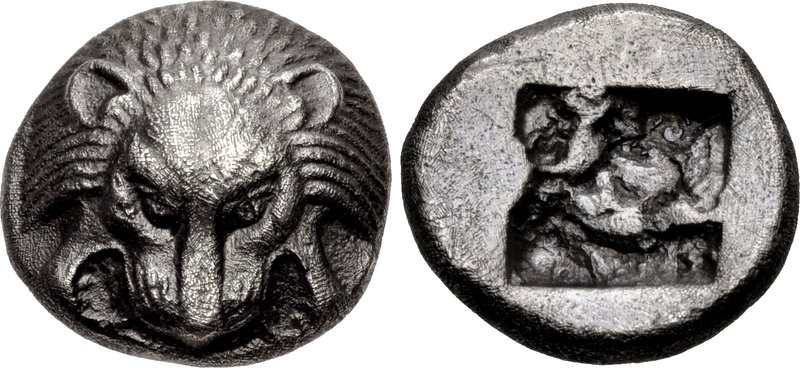|
Aeaces (father Of Polycrates)
Aeaces ( grc, Αἰάκης, fl. 550 BC) was the father of Polycrates, the powerful tyrant of Samos. He was a prominent aristocrat in his own right, and may even have been the ruler of the island for a period in the mid-sixth century. He is sometimes referred to as Aeaces I to distinguish him from his grandson Aeaces (son of Syloson), Aeaces II, who ruled Samos in the late sixth and early fifth centuries BC. Life Herodotus mentions Aeaces' name but does not provide any information about his life. A very late source, the Suda, says that Polycrates' father was the ruler of Samos around 565 BC. His wealth and power is also suggested by his ability to attract the poets Ibycus and Anacreon to his circle – the former wrote poetry for the young Polycrates, while the latter was supposedly his tutor. A large seated statue of a goddess from the mid-sixth century BC, erected on the Astypalaea (the Samian Acropolis) bears an inscription identifying its dedicator as Aeaces. Stylistically, the ... [...More Info...] [...Related Items...] OR: [Wikipedia] [Google] [Baidu] |
Polycrates
Polycrates (; grc-gre, Πολυκράτης), son of Aeaces, was the tyrant of Samos from the 540s BC to 522 BC. He had a reputation as both a fierce warrior and an enlightened tyrant. Sources The main source for Polycrates' life and activities is the historian Herodotus, who devotes a large section of book 3 of his '' Histories'' to the rise and fall of Polycrates (3.39-60, 3.120-126). His account was written in the third quarter of the 5th century BC, nearly a century after Polycrates' death, was based mostly on oral traditions and incorporates many folk-tale elements. Furthermore, Herodotus creatively shaped his account of Polycrates in order to make general moral points and to comment on the imperialism of the Athenian empire in his own day. Some poetry from Polycrates' time comments on him in passing and there is a smattering of references to Polycrates in other literary sources ranging in date from the 4th century BC to the Roman Imperial period. These sources preserve u ... [...More Info...] [...Related Items...] OR: [Wikipedia] [Google] [Baidu] |
Samos
Samos (, also ; el, Σάμος ) is a Greek island in the eastern Aegean Sea, south of Chios, north of Patmos and the Dodecanese, and off the coast of western Turkey, from which it is separated by the -wide Mycale Strait. It is also a separate regional unit of the North Aegean region. In ancient times, Samos was an especially rich and powerful city-state, particularly known for its vineyards and wine production. It is home to Pythagoreion and the Heraion of Samos, a UNESCO World Heritage Site that includes the Eupalinian aqueduct, a marvel of ancient engineering. Samos is the birthplace of the Greek philosopher and mathematician Pythagoras, after whom the Pythagorean theorem is named, the philosophers Melissus of Samos and Epicurus, and the astronomer Aristarchus of Samos, the first known individual to propose that the Earth revolves around the sun. Samian wine was well known in antiquity and is still produced on the island. The island was governed by the semi-autonomous ... [...More Info...] [...Related Items...] OR: [Wikipedia] [Google] [Baidu] |
Aeaces (son Of Syloson)
Aeaces, son of Syloson ( grc, Αἰάκης Συλοσῶνος) was the ruler of Samos in the late sixth and early fifth centuries BC. He belonged to an established dynasty of Samian rulers - his father Syloson had been installed as ruler of Samos by the Persian king Darius I around 520 BC and his uncle Polycrates had reigned before that. Aeaces was deprived of his tyranny by Aristagoras, when the Ionians revolted against Persian Persian may refer to: * People and things from Iran, historically called ''Persia'' in the English language ** Persians, the majority ethnic group in Iran, not to be conflated with the Iranic peoples ** Persian language, an Iranian language of the ... rule in 500 BC. He then fled to the Persians, and persuaded the Samians to abandon the other Ionians in the sea-fight between the Persians and Ionians. After this battle, in which the latter were defeated, he was restored to the tyranny of Samos by the Persians in 494 BC. Notes References * {{SmithDG ... [...More Info...] [...Related Items...] OR: [Wikipedia] [Google] [Baidu] |
Archaeological Museum Of Pythagoreio 8
Archaeology or archeology is the scientific study of human activity through the recovery and analysis of material culture. The archaeological record consists of artifacts, architecture, biofacts or ecofacts, sites, and cultural landscapes. Archaeology can be considered both a social science and a branch of the humanities. It is usually considered an independent academic discipline, but may also be classified as part of anthropology (in North America – the four-field approach), history or geography. Archaeologists study human prehistory and history, from the development of the first stone tools at Lomekwi in East Africa 3.3 million years ago up until recent decades. Archaeology is distinct from palaeontology, which is the study of fossil remains. Archaeology is particularly important for learning about prehistoric societies, for which, by definition, there are no written records. Prehistory includes over 99% of the human past, from the Paleolithic until the advent of ... [...More Info...] [...Related Items...] OR: [Wikipedia] [Google] [Baidu] |




.jpg)